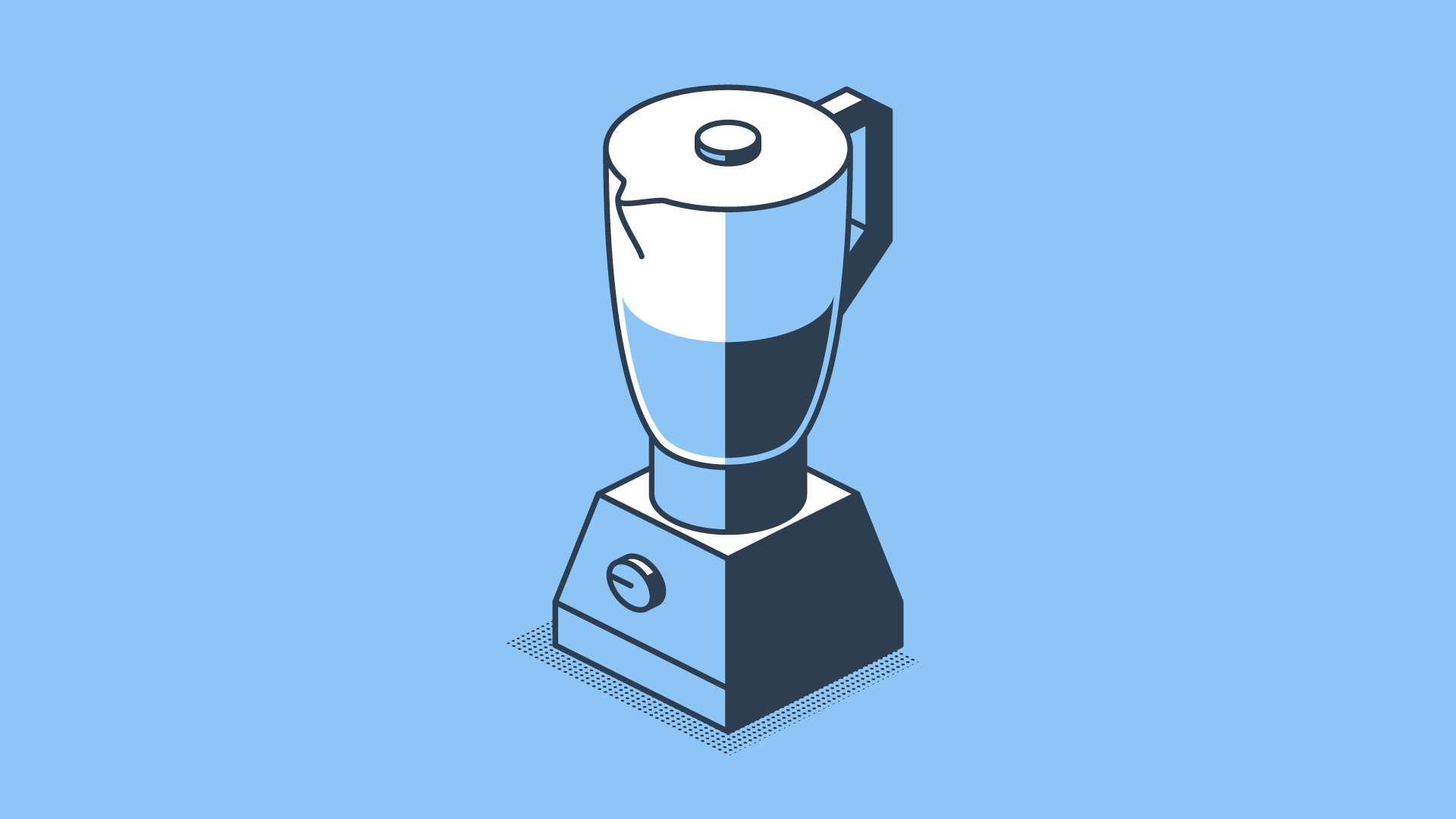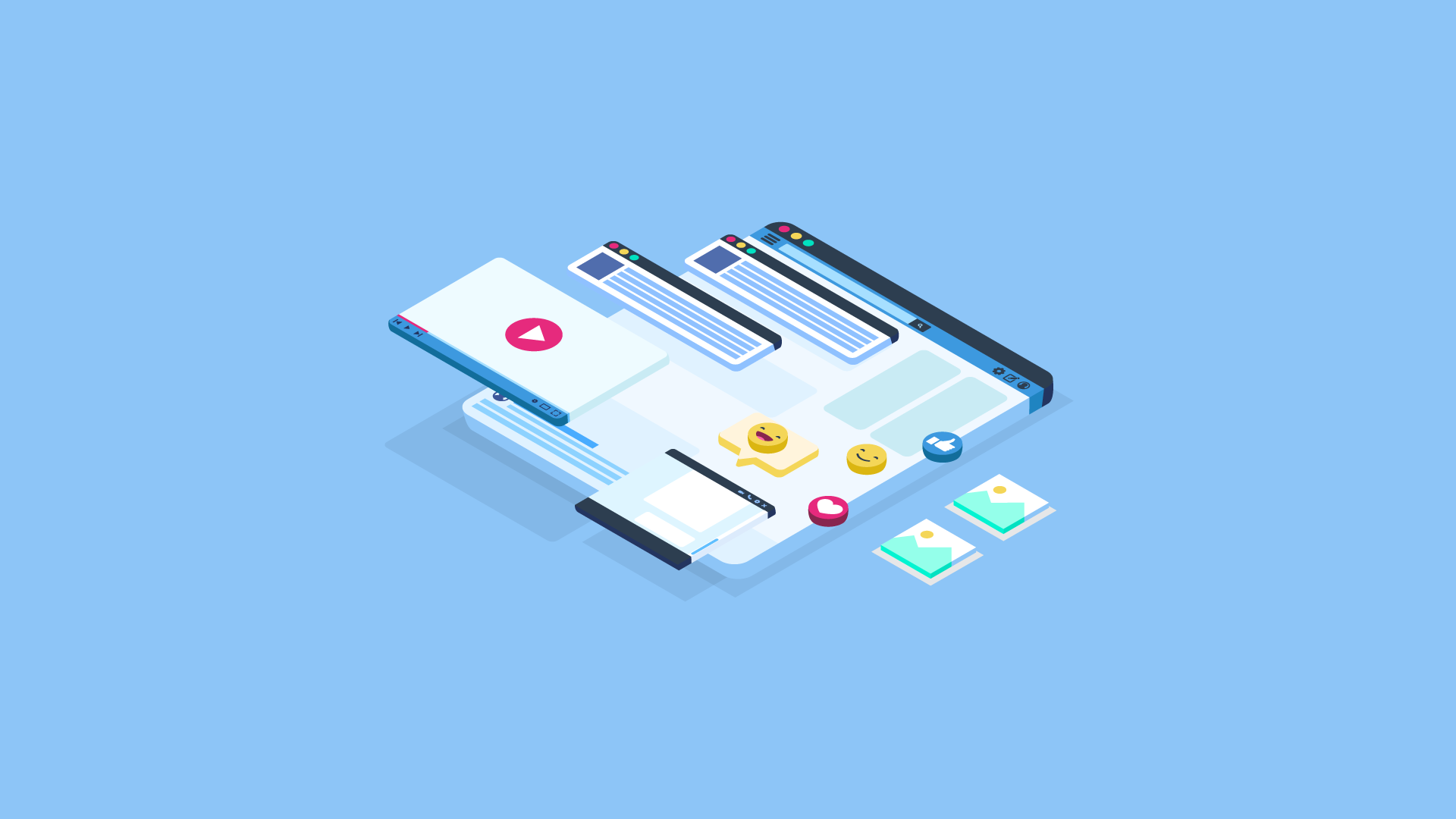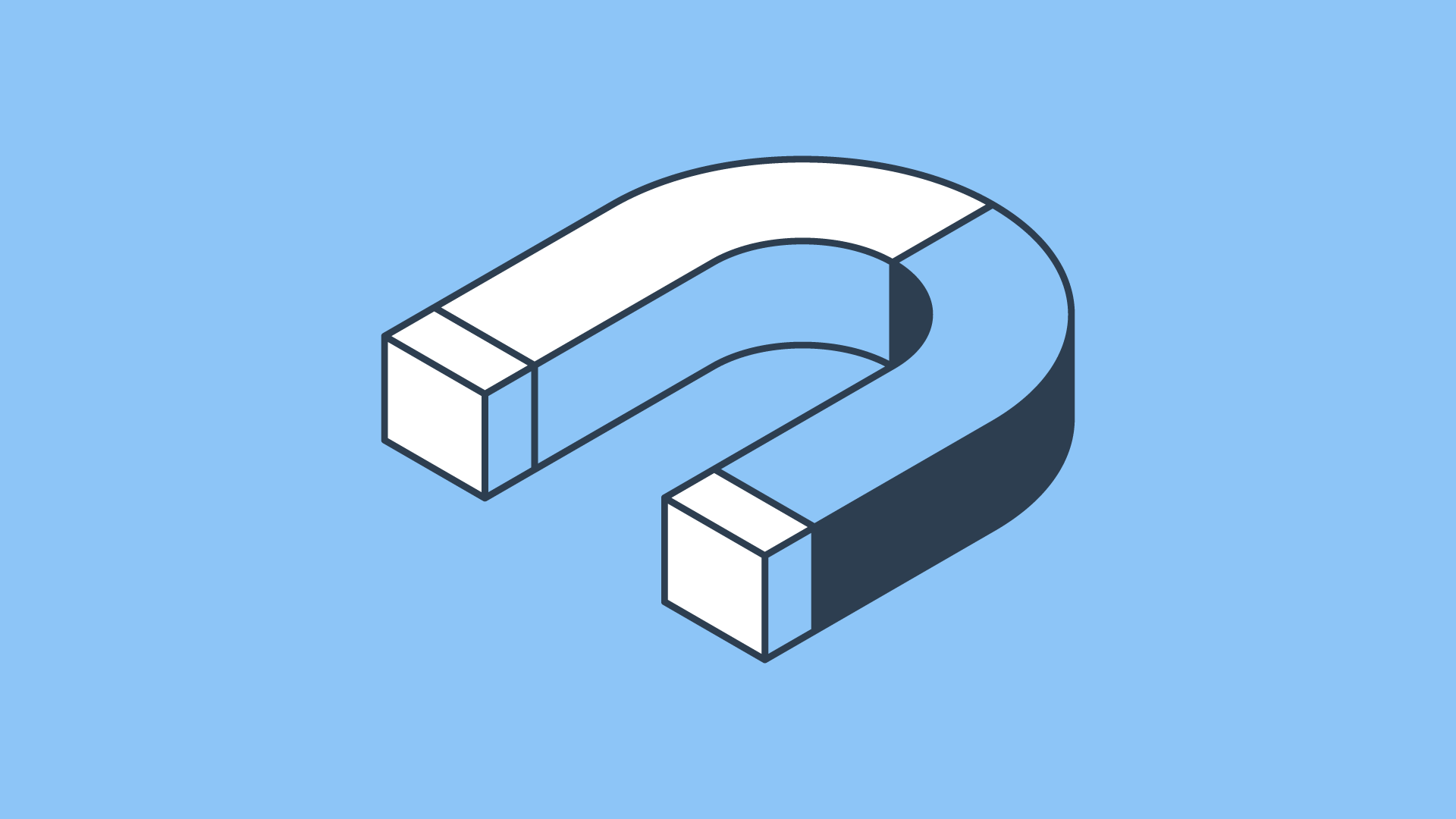Are you tired of constantly chasing leads and struggling to attract customers? Have you heard of inbound marketing, but don't know where to start? Developing an inbound marketing strategy can help you attract, engage, and delight your ideal audience.
Inbound marketing is a customer-centric approach that focuses on creating valuable content and experiences that attract and retain customers.
It's a shift away from traditional, interruptive marketing tactics, and towards building meaningful relationships with your audience. However, developing an effective inbound marketing strategy requires careful planning and execution.
If you want to succeed in today's digital landscape, you need to have a solid inbound marketing strategy in place.
In this article, we'll explore the key steps to developing an inbound marketing strategy that will help you attract, engage, and delight your ideal customers.
| Inbound Marketing A business methodology that attracts customers by creating valuable content and experiences tailored to them. Simply put, turning strangers into brand promoters. |
What is Inbound Marketing?
Inbound Marketing is a strategy that focuses on providing value to your audience before trying to sell them something. It works best when you offer a solution to your audience’s problem.
With Inbound marketing, prospects come looking for information about your company rather than you chasing them down. The goal of inbound marketing is to attract customers through great content and build trust and relationships.
Inbound marketing is about solving people’s problems and providing them with useful information. Your inbound marketing should consist of how-tos, blog posts, case studies, etc. These types of content help build trust and credibility among potential customers and prospects. Inbound marketing is all around building relationships with customers and prospects, rather than trying to sell products or services to them.
There are many ways you can market your online presence, including social media, SEO, email marketing, etc., but it always starts with a strong foundation. You want to attract traffic to your site via different channels, such as SEO, PPC, social media, etc.
How to Develop an Inbound Marketing Strategy
1. Set your Inbound Marketing Goals
The most important thing about setting goals is that it helps you focus on what you want to achieve. But how do you know whether your goal is worth achieving? If you don't set clear, measurable, achievable, realistic, and timely goals, you won't be able to measure the success of your efforts. You'll end up wasting time and money on things that aren't working out.
Your goals should be specific, measurable, and actionable. They should be realistic, achievable, and time-bound. And they should be SMART - Specific, Measurable, Achievable, Relevant, and Timely.
Here are some examples of SMART goals:
Specific: "I will increase my sales revenue by 10% next month."
Measurable: "My sales revenue increased by 5% last month."
Achievable: "I will reach my target within 3 months."
Realistic: "I will sell 20 units per week."
Timely: "I will complete my project by June 30th."
2. Replace your funnel with the flywheel
The traditional marketing funnel may be your trustworthy ally which you've relied upon for years. However, to develop an effective inbound marketing strategy, it's time you say goodbye to the funnel and allow the flywheel to move into place instead. This is a crucial aspect of creating your strategy and seeing the results you want.
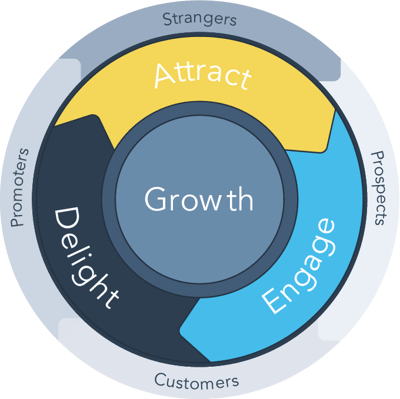
Consider it carefully. Once you reach the end of the marketing funnel, you lose the energy you invested into it. Where does a lead go from there? What are they going to do next?
Essentially, the customer is an "afterthought" and that's not how they should be treated. The linear approach isn't effective at measuring growth. Yes, it generates new customers but the funnel doesn't take into account how those customers help you grow your business.
The funnel doesn't focus on customers; it only focuses on getting them. Ignoring how they can be helped is a huge mistake because word of mouth is arguably among the best fundamentals for good marketing.
In contrast, with the flywheel, customers are at the center. Funnels lose their energy at their bottoms, but flywheels use momentum to keep spinning. You start by attracting potential clients to your business through your brilliant inbound marketing strategies. This is what gets the flywheel spinning.
When the friction between marketing content and sales conversions is low, there's plenty of potential energy being generated by the wheel, which allows it to accelerate quickly. Once there's a sale, remember to delight customers as they're part of the flywheel that helps grow your business.
Happy customers stick with you for longer than unhappy ones. They're great brand ambassadors who will tell everyone about your business. It helps keep the “attract” part of your prospect pool full and it helps them already partially trust you.
3. Refine your Buyer Personas
As tempting as it can be, don't jump into creating content without knowing your buyers. Your buyer personas are semi-fictional depictions of your best or ideal customer. They're based on data collected about your audience, including what they care about, how they behave online, and where they spend their time.
By collecting and using information about people like them, you can create detailed, realistic profiles of the kinds of customers you'll deal with. Only once you understand their ambitions, attitudes, and priorities can you craft content that engages with them.
I know, it can be hard to come up with compelling reasons to invest time in building out your personas. But unless you want to make generic, unfocused content, you need to know who your audience is. You need to start thinking like a publisher.
4. Map out the Buyer's Journey
The buyer's journey is a well-known concept within marketing and sales, but many businesses still struggle to understand exactly how customers behave. By mapping out the steps involved in the buying process, companies gain insight into what makes people buy products and services.
By understanding the different stages of the buyer's journey, marketers can better target consumers, improve customer experience and increase conversion rates. A simple way to map out the buyer's journey is to think about the first interaction a consumer has with your company (the awareness stage) and then follow them throughout the purchase cycle (the consideration stage).
Once you've mapped out the buyer's journey, you can identify opportunities to provide value along the way. For example, suppose you notice that most people visit your website before making a decision. In that case, you could offer them free trial periods or other incentives to encourage them to stay on-site.
You can also use this knowledge to develop more effective landing pages. If you find that people tend to click away from your homepage after reading a few paragraphs, you might consider adding a call to action button to get them to take further action.
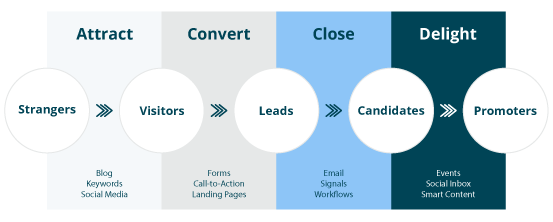
Awareness
Here, the individual recognizes they have a problem, which is why they're looking for a solution. The most important thing here is not to promote your brand at the moment because they would have no interest. You can get them to take action by providing them with a clear definition of their problem and then throwing as much information as they need to move them to the next phase.
During the awareness phase use could you the following types of content to inform your prospects:
- Thought leadership eBooks
- Educational blogs
- Industry reports and analysis
- Downloadable guides
- Troubleshooting tips
- Infographics
Consideration
Once the individual has identified their problem, they then want to know which products or services are most likely to be able to solve the problem. They would still be pretty uninterested in you at this point, they're just trying to figure out which solution works best for them.
During the consideration phase, you could use the following types of content to inform your prospects:
- Podcasts
- Webinars
- How-to videos
- Online FAQ or Q&As
- Technical blogs
- Expert eBooks with actionable steps
- Downloadable tools
Decision
Now, the customer has chosen a solution. They know how to address their problem, they've done research into specific products and services, and will be able to narrow down their choices. It's ultimately for making a purchasing decision. If you've engaged your audience in the previous two stages by creating engaging content, it's far more likely that they will trust you.
And finally, you can shout out your brand message and detailed information about your business processes.
- Trial offers
- Demos
- Competitor comparisons
- Client case studies
- Price guides
- Service level agreements (SLAs)
Delight
Remember when I mentioned that it was time to move away from the sales funnel and embrace the flywheel? It's here that matters most. When you reach the delight stage, you must exceed your customers' expectations so they enjoy their experience. You need to show that you've gone above and beyond by providing promotions, discounts, and more customer support.
They will be more likely to return and become loyal to you if you foster an emotional connection with them. Happy customers are also your best source of marketing assets, as they're more inclined to recommend your product to their friends.
- Follow-up emails
- SMART content
- Surveys
- Customer spotlight downloads
Creating content is one of the most important aspects of any marketing campaign, especially if you want to be successful. We've created a buyer's journey template for you to get started. You can easily create content for each stage by using the templates provided.
6. Develop your Content Strategy
The world of digital marketing is constantly evolving, and one of the most important things you can do is craft your unique content strategy.
Written content
Now's the time you can shift your focus to content. You know who your personas are, you know their pain points and you know the type of content suited to each stage of the buyer's journey.
You can use tools like Moz and SEMrush to find keywords you want to focus on and ultimately rank for on search engines such as Google. Your blog posts need to contain those keywords.
Blogging for inbound marketing purposes is about providing valuable content that users will appreciate and respect. Content is where you spend most of your time earning the trust of potential buyers so that they'll be willing to buy from you.
One of the greatest things about creating content this way is that the traffic you receive will be your ideal customer because the keywords you used were what they searched for. Here's why else you need to create content:
- It generates relevant traffic.
- It converts visitors into leads.
- Content informs your audience and helps them solve problems
- It shows you're a thought leader in your industry.
- It offers long-term benefits.
Always focus on producing high-quality content and useful information instead of focusing on sales talk, the point is to help prospects. Make sure your content aligns with your target audience.
This means focusing on various aspects including:
- Pain points - You must empathize with and resolve pain points.
- Challenges - Understand their challenges and be considerate.
- Goals - How to achieve goals.
- Interests- be relatable.
- Research habits – they may prefer short content over longer ones; perhaps even videos.
You should also consider how frequently you will post new content for your site. Blogging regularly will help you increase traffic to your site, but if you don’t write high-quality content, then it won’t matter how often you post.
You should always review your tone of voice before you begin writing content. If you're already producing content and you feel comfortable with your brand voice and tone, then there's nothing wrong with sticking with it.
If you're new to it or want to switch things up, here is a blog that teaches about brand strategy.
Video Content
Content marketers often think they've done enough when it comes to creating great content. They're wrong. Not every piece of content needs to be a blog post or even a white paper; sometimes videos work just as well, especially when it comes to B2C brands.
Here are some examples of companies that did video marketing right.
HubSpot research found that 59% of marketers found video marketing to be somewhat effective for reaching their company’s overall business goals. But while most people know about the benefits of video marketing, many still aren't sure exactly how to go about getting started.
The good news is that video isn't hard to produce. At least, it doesn't have to be. All you need is a camera, decent lighting, a tripod, and your creativity. But beyond that, there are plenty of ways to improve upon the standard "here's my product" pitch. Start with an explainer video.
7. Improve your SEO Strategy
The next step in developing an effective inbound marketing strategy is to focus your attention on SEO. As more businesses become available online, search engines are becoming ever-vast places. With SEO, you can maximize your chances of customers finding your business when they search for a specific product or service.
It's not just about stuffing your content full of matching keywords. It’s important to invest in SEO because it ensures that every aspect of your website works properly and helps your business succeed. You can see how businesses often hire an agency because they have the expertise and resources necessary for the task at hand.
There are some basic things you can do yourself if you have some free time. Here's how:
- Research the best keywords for describing your business. These keywords will help you create high-quality content for your website.
- Improve your SEO by using your keywords in your meta title and description tags. These are the titles and descriptions for each page of your site.
- Your web pages should contain keywords to help search engines such as Google know what your site is about.
- A link from one site to another is viewed by a search engine as a vote or recommendation. If a website has lots of recommendations, it appears to be ranked higher on the results page because Google wants people to see websites with good content.
To help you improve your marketing efforts, use tools such as Moz and Semrush for more detailed SEO analytics. As part of your broader inbound marketing strategy, if you want to improve your website's search engine ranking, then there are some additional steps you can take to help get your site off to a good start.
- Make sure that you track analytics.
- Make sure there isn't another version of the same website.
- Make sure the URLs are search engine friendly.
- You need to create a robots.txt file for your website.
- Put an XML sitemap file in the root directory.
- Page titles are important for SEO.
- Make sure your meta descriptions include relevant keywords.
- Make sure you use keywords within a series of heading tags and subheading tags.
- Create high-quality content for every section.
- When adding images to your website, don't forget to add alt tags.
- When linking to another page within your site, use anchor links for keywords.
- Make sure your web pages load quickly.
After covering the basics, take your strategy up another level by focusing on some big items with these tips:
- Content for link building includes research and visualization, creating tools, and writing valuable resources or guides.
- Internal content can be used to provide information about differences between brands, highlight the various options available, compare prices, and include aftercare instructions.
- Social media and social networking sites: webinars, how-tos, guides, games, competitions, reviews, demos, and FAQs.
- PR: Overview of the company, proof that you’re an expert, and resources.
You shouldn't rush anything when it comes to inbound marketing. If you don't follow these steps, they may affect your results.
8. Optimize your Website with Growth-Driven Design
If you're looking to improve the effectiveness of your inbound marketing, you might consider adopting the Growth-Driven Design (GDD) methodology. This approach helps businesses grow by focusing on what matters most - driving traffic to high-value landing pages where people are ready to buy.
You may not need to adopt GDD as part of your inbound marketing strategy, but it makes sense to go down this path if you want to get more from your website's marketing efforts Using GDD, you can obtain a website that continually improves by measuring its performance using measurable data without losing interest in leads and customers.
You can break the GDD process down into three distinct phases: strategy, launch pad, and continuous improvement. In addition, here’s some additional information about each one.
Strategy: It takes about 14-30 days, and starts with setting SMART goals. You must understand user behavior, solve design problems, and connect with customers.
Launch Pad: Take about 60-90 days, focus on prioritized improvements to launch sooner and get faster results.
Continuous improvement: In 14 or 30-day sprints, make data-driven optimizations as your business evolves and grows with a peak-performing website.
For you to be successful with GDD, you need to put a lot of time and energy into it.
Develop an Inbound Marketing Strategy
Switching from traditional, outbound-dominated marketing programs to inbound-dominated marketing investments can be a bit of a leap of faith, however, the benefits are undeniable. The sooner you implement an effective inbound marketing strategy, the sooner you will reap the benefits of inbound marketing - increased traffic, at a lower cost.
If you want to amplify your efforts and achieve your goals for your inbound marketing strategy, check our How to Get started with Inbound Marketing article. You'll learn more about inbound marketing, including topics like inbound processes, stats, personas, goals, and loads more.
Interested in knocking up an effective inbound marketing strategy to hit your goals out of the park?

